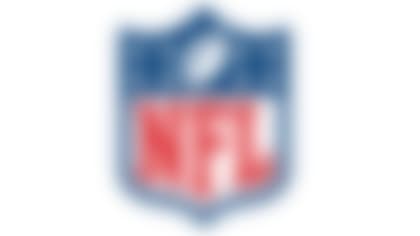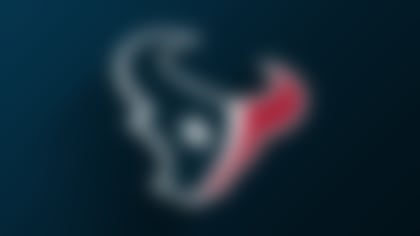We've begun the long pre-draft season, which means it's time for mock drafts, pro-day workouts, the NFL Scouting Combine -- and plenty of hype. That can be fun, but sometimes it's better to cut through all of that and take a hard, objective look at things. That's what I decided to do with the quarterbacks who are going to be available in the 2013 NFL Draft.
This is an especially tricky year when it comes to quarterbacks; there's a lack of obvious future stars, and folks are reaching very different conclusions about this crop of signal-callers. So I thought it would be a good idea to try to sort out this position group using a time-tested formula for predicting future success.
This formula measures quarterbacks according to how they perform in three categories:
1) Air yards, which is defined as the number of yards a ball travels from the point of release to the point of the catch.
2) Rusher points, which measures the quarterback's effectiveness against four- and five-man pass rushes.
3) Total passing statistics, which includes things like passer efficiency, touchdowns, interception ratio and completion percentage.
Quarterbacks are assigned points based on their performance in each of those three areas; they also get bonus points based on their height and weight. These points are then combined to produce a final score.
This approach is different from the standard forms of evaluation in that I did not consider things like game tape or my personal observations about players' performances. I simply measured several of the high-profile quarterback prospects according to the numbers (from the 2012 season) that I think are the most important, then ranked the five best according to their scores.
As a result, the list I came up with looks different from many of the other top-five lists out there. It includes a few surprising names (like Ryan Nassib and EJ Manuel) and excludes a few others (like Mike Glennon).
The formula I used is a fairly accurate predictor of future success, but it's important to note that it's not the be-all, end-all of quarterback evaluation. It's crucial to watch game tape, to see these guys throw in person and to consider other factors, some of which I touched on in my comments about the individual prospects. This list doesn't even necessarily reflect how I would order these players when all those factors are taken into account. It merely represents one way to take stock of the quarterback talent that will be entering the league in 2013.
1) Geno Smith, West Virginia
Smith is a very athletic signal-caller who started 39 consecutive games for the Mountaineers, completing more than 70 percent of his passes. I think if Smith approaches his rookie season with the same type of work habits as Andrew Luck or Russell Wilson, he's got a chance to be a good quarterback. Score: 93
2) EJ Manuel, Florida State
Manuel is athletic and moves around better than you might think. He completed 68 percent of his passes last season, which is pretty good. I think he has to play more under control than he did at Florida State. Score: 88
3) Landry Jones, Oklahoma
To me, Jones -- who is, incidentally, named after legendary former Cowboys coach Tom Landry -- seems to lack the enthusiasm you want a quarterback to have. You don't see the leadership-type qualities you expect from someone in that position, especially when you watch his bench demeanor. He has been a very successful Sooner, however, throwing 123 touchdown passes in his career. Score: 79
4) Ryan Nassib, Syracuse
Nassib comes from an athletic background; his father played football at Delaware and his mother played volleyball at Villanova. With his mannerisms and the way he throws the ball, he feels like a taller version of Colt McCoy. You kind of like guys who stick around for a fifth year when they could have left, as Nassib did. It would be worth giving Nassib a much closer look, because the numbers say he's much better than many evaluators think he is. Syracuse did not have a very good team, but Nassib and the Orange still got to the New Era Pinstripe Bowl, where they blew away Smith's West Virginia team. Score: 72
5) Matt Barkley, USC
A four-year starter and three-time captain, Barkley is probably the most prepared guy in this group in terms of readiness to be an NFL quarterback. There are some questions about his athletic ability; it's going to be interesting to see what he does in the athletic drills at the NFL Scouting Combine. He had a much worse season in 2012 than he did the year before; if I had used his stats from 2011, Barkley would have scored much higher. The question is, will teams get the Barkley of 2011 or the Barkley of 2012? He was also injured at the end of the season. I wouldn't be surprised if, by the time the draft rolls around, he's the second quarterback taken. Score: 58
Brandt: How the draft has evolved
Before the bright lights of NYC, the draft featured old magazines and rolls of quarters. Gil Brandt reminisces. **More ...**
One name you won't find in the top five is that of N.C. State product Mike Glennon. He's being talked about as if he might be one of the first quarterbacks drafted, but the numbers do not support that lofty status. Glennon was sacked an alarming 36 times last season, but my main concern with him has to do with accuracy: He completed just 58.5 percent of his attempted passes.
Tom Landry used to be of the opinion that accuracy couldn't be fixed; a quarterback who entered the NFL with accuracy issues wasn't likely to get any better, like the strong but wild young baseball pitchers who stay wild, no matter what pitching coaches do with their mechanics.
Glennon reminds me of Boomer Esiason, who also had accuracy issues as a youngster. I remember during one Cincinnati Bengals game, Esiason had a receiver wide open, but instead of connecting with him for the game-winning touchdown, he threw the ball two feet over the guy's head. That's what you see in Glennon; his throws bounce, they go over the receiver's head. There's no continuity when it comes to accuracy and ball placement.
Glennon also had a comparatively low rate of successful plays (43.9 percent, significantly lower than Smith's 54.6 percent) and averaged just 6.3 yards per play, another comparatively low number (Barkley had the best number in this group, averaging 7.9). The yards-per-play figure reminds me of former Purdue quarterback Mark Herrmann, whose completion percentage masked a low yards-per-play average. Glennon did have a lot of his passes dropped (46, or 8.1 percent), but I suspect that might be another indicator of accuracy issues; if he's not getting the ball to his receivers in the right spot, they're going to drop his throws.
Jeremiah: Five buzzworthy prospects
Daniel Jeremiah identifies five prospects creating a buzz as potential second- or third-day steals in the 2013 NFL Draft. **More ...**
Tyler Wilson is another high-profile prospect missing from the top five, and that's because his numbers in 2012 weren't nearly as good as they were in 2011. However, I think that had a lot to do with the turmoil that enveloped the program at Arkansas. I thought very highly of him back before the 2012 season started; he's the kind of guy who might go a bit later than he would have, but who might turn out to be pretty good in the end.
Again, this formula isn't the be-all, end-all of quarterback evaluation. There is, in fact, one signal-caller worth keeping an eye on, even though he failed to crack the top five: MarQueis Gray from Minnesota. He isn't talked about much, but I think he might surprise folks.
There's plenty of evaluating still to be done, and I'm sure consensus will shift about these players as that process plays itself out. This is merely how the quarterbacks line up by the numbers.
Follow Gil Brandt on Twitter _@GilBrandt_.




